What are Starch Sweeteners?
Starch is composed of chains of glucose molecules. Some of these chains are straight (amylose), which make up 20–30% of the starch molecule, and some are branched (amylopectin), which make up 70%–80% of the starch molecule.
Sweeteners can be made from starches by breaking up the chains of glucose into smaller units through hydrolysis. Depending on the enzyme used, a diverse range of products can be made with varying sweetening capacity, texture, and taste.
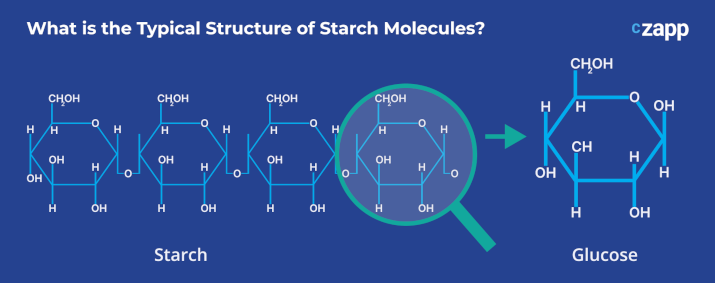
Starch sugars are used in food and beverage products as well as in the cosmetics, pharmaceutical, and bioprocess industries for fermentation. These sweeteners can be incorporated into a wide range of products, each with its own set of characteristics. As well as providing sweetness, these products contribute to the texture, colour stability and flavour of the final product. Glucose syrups, for example, can be used in confectionery for their anti-crystallizing properties.
Glucose (dextrose), fructose glucose syrup, corn syrup, and sorbitol are examples of starch-based sweeteners and sugar substitutes.
Starch Sweetener Production
The glucose chains in the starch molecule need to be broken up to make sweeteners. This can be done using enzymes or acid catalysts; almost all starch sweeteners are now made using enzymatic processes.
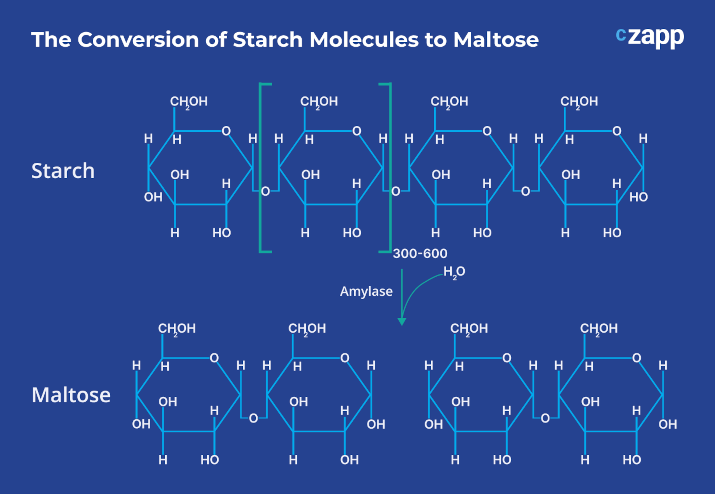
Amylase is added to a mixture of starch and water, and breaks the longer glucose chains into shorter chain oligosaccharides. These can then be broken down further into individual glucose molecules using the enzyme glucoamylase. The glucose can then be further converted into other sweeteners using other enzymes, such as D-xylose isomerase to make fructose.
A generalised process for producing starch-based sweeteners is as follows:
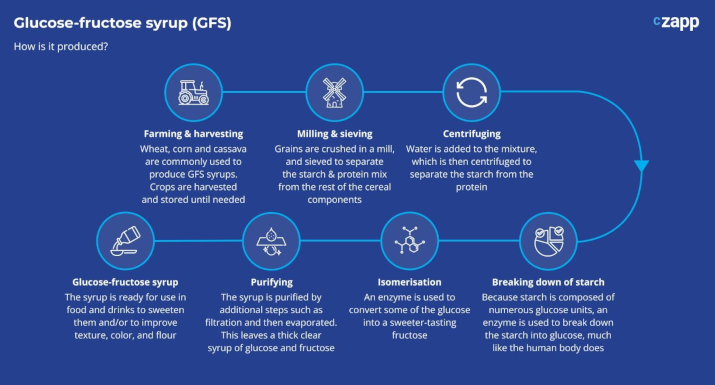
The Use of Sweeteners
Glucose Syrups, Dextrose, Glucose-Fructose Syrups and Fructose-Glucose Syrups are all plant-based ingredients. These sugars are derived from starches mostly from wheat or maize.
In the EU Glucose-Fructose Syrups are sometimes referred to as Isoglucose, a name derived from the manufacturing process. The term High Fructose Corn Syrup (HFCS) is commonly used in the United States and other parts of the world to refer to Glucose-Fructose syrups or Fructose-Glucose syrups.
Glucose Syrup
Glucose syrup is a refined, concentrated aqueous solution of glucose. It often also contains maltose (a sugar formed of two joined glucose molecules) and short glucose chains. Glucose syrups, unlike crystalline glucose or dextrose, may contain trace amounts of fructose as a result of the manufacturing process.
Aside from making foods taste sweet, glucose has some other useful properties. It can be used to keep food moist, making it a popular ingredient in factory-made cakes to keep them from crumbling or becoming dry. It also acts as a bulking agent and thus maintains a softer mouthfeel.
Application: Biscuits, Jams, Canned Fruit, Jelly, and Confectionary.
Dextrose
Dextrose is chemically identical to glucose.
Dextrose is a colourless solid and is usually available in two powdered forms: dextrose monohydrate and dextrose anhydrous. Dextrose monohydrate is most commonly used for food applications as it often has a lower cost of production.
Application: Baked and Baking goods.
Maltose
Maltose, also known as malt sugar, is a disaccharide composed of two glucose units linked together by a bond. Maltose is often derived from maize. It only has about 30% of the sweetness of sucrose.
Application: Boiled sweets, caramels, toffees, ice cream, and jam filled goods.
Glucose-Fructose Syrups
Fructose syrup is made when some of the glucose present in syrup is converted to fructose. These are liquid sweeteners used widely in the food and beverage industry. When the starch feedstock used is corn, the syrups are often referred to as High Fructose Corn Syrup (HFCS).
The proportions of glucose and fructose can vary widely. However, the product is classified as a fructose-glucose syrup if the fructose content exceeds 50%.
In Europe, isoglucose syrups are glucose-fructose syrups and fructose-glucose syrups with a fructose content greater than 10%.
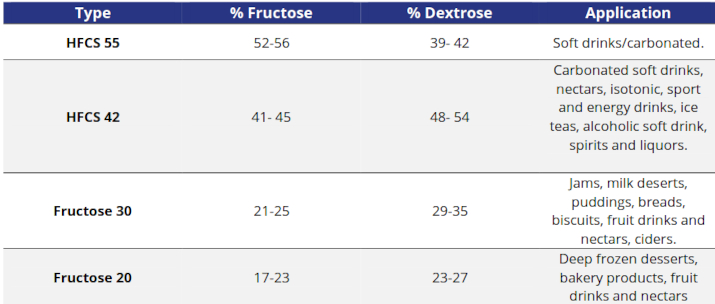
Industry Insights
According to Bloomberg, the corn syrup market is expected to reach $13.5 billion globally by 2031 at 3.2% CAGR.
Increases in global population, rapid urbanisation, changes in food habits, and surge in demand for packaged food could drive the growth of the global corn syrup market.
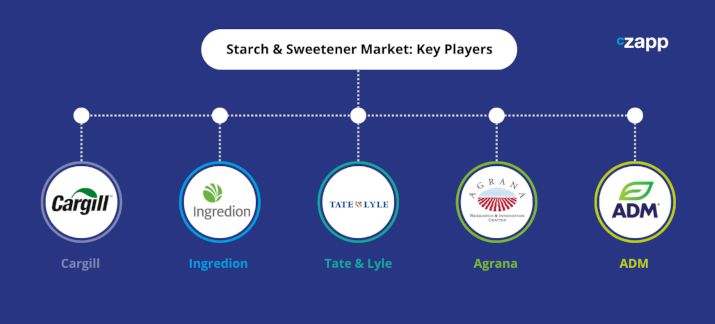
Cargill
Cargill is not only one of the largest private companies in the US, but it is also a major player in the agricultural, livestock, and processed foods markets.
Ingredion Inc
Ingredion is a global ingredients solutions provider that develops, produces, and sells a variety of food and beverage ingredients, primarily starches and sweeteners. Ingredion’s starch-based products include food-grade and industrial starches, as well as biomaterials, and their sweetener products include glucose syrups, maltose syrups, high fructose corn syrup, dextrose, polyols, maltodextrins, and glucose and syrup solids.
The majority of their products are derived from the processing of corn and other starch-based materials such as tapioca, potato, and rice.
Tate & Lyle PLC
Tate & Lyle is a global supplier of ingredients and solutions to the food, beverage, and industrial markets. The company operates in two segments: Food & Beverage Solutions and Sucralose. The Food & Beverage Solutions segment is active in beverages, dairy, soups, sauces and dressings, and bakery, whereas the Sucralose segment is a sweetener used in a variety of food categories and beverages.
Agrana Beteiligungs AG (AGRANA)
Agrana is an Austrian company that processes agricultural raw materials and manufactures foods and intermediate products for the downstream food industry and non-food applications. The company operates in three segments: sugar, starch, and fruit.
The Sugar segment markets directly to consumers through food retailers and the sugar industry, whereas the Starch segment processes and refines maize and potatoes into starch products. The Fruit segment develops and manufactures fruit preparations and fruit juice concentrates.
Archer-Daniels-Midland Company (ADM)
ADM is an agricultural supply chain manager and processor, as well as a human and animal nutrition company, that operates through three business segments: Ag Services and Oilseeds, Carbohydrate Solutions, and Nutrition.
The Ag Services and Oilseeds segment includes global activities related to agricultural raw material origination, merchandising, transportation, and storage, whereas the Carbohydrate Solutions segment includes corn and wheat wet and dry milling and other activities. Plant-based proteins, natural flavours, flavour systems, natural colours, emulsifiers, soluble fibre, polyols, hydrocolloids, probiotics, prebiotics, enzymes, botanical extracts, and other specialty food and feed ingredients are all manufactured, sold, and distributed by the Nutrition segment.
Key Flows
The use of glucose syrup is highly favoured by the food and beverage industry because it does not change the product’s appearance and improves moisture retention, keeping the goods fresher for longer. The EU is a major importer of glucose syrups.
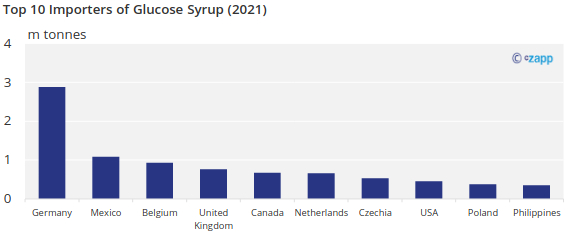
Source: UN ComTrade
Seeing as glucose syrups are used to help prevent crystallisation in baked goods and confectionary products, production of these syrups is increasing significantly to meet demand, particularly in China and the EU.
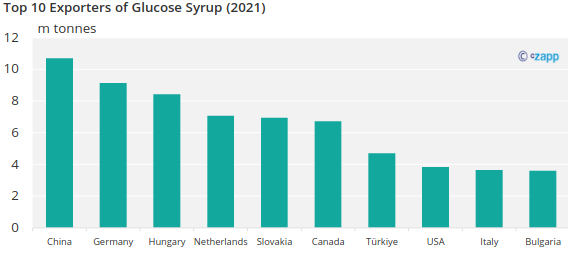
Source: UN ComTrade
When it comes to producing High-Fructose Corn Syrups (HFCS), North America dominates the market, with Mexico being the largest consumer in 2021, importing nearly 3 million tonnes of syrup.
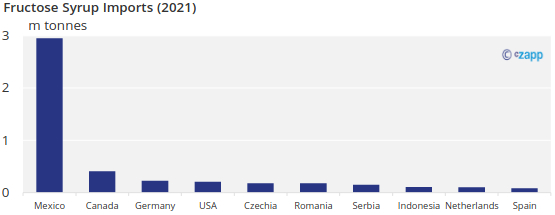
Source: UN ComTrade
Similar to glucose syrup, the demand for fructose syrup is due to its wide use in the confectionary, bakery, and beverage industries, particularly in soft drink manufacturing.

Source: UN ComTrade
A few words regarding polyols…
Polyols are a type of carbohydrate found naturally in certain fruits and vegetables, but they can also be manufactured and used as food additives.
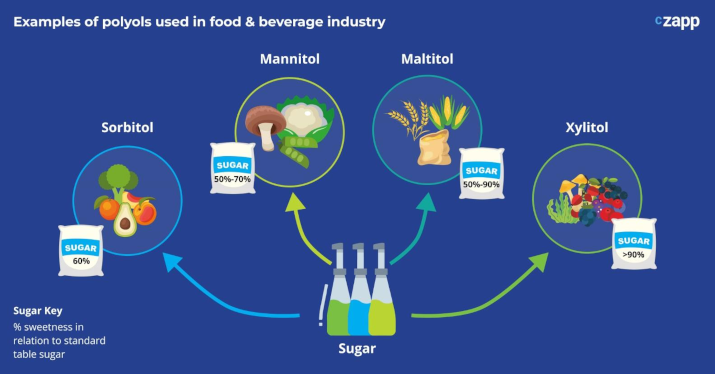
These sugar alcohols are generally low in calories, digest slowly, and have a low glycaemic index, making them ideal for use as a sugar substitute.
Polyols are widely used in the food and beverage industries because they have many desirable characteristics. One key characteristic of polyols is that they act as stabilising humectants in reduced sugar goods, allowing the products to stay moist for longer.
Application: Cakes, Confectionary, Cereals, juices, and Frozen desserts.
Sorbitol:
Sorbitol is a sugar alcohol that is obtained by reduction of glucose. Sorbitol can be found in a variety of fruits and vegetables, the most common being apples, pears, peaches, and prunes.
In regard to its application, sorbitol is often used in diet foods, mints, cough syrups, and sugar-free chewing gum. Further to this, sorbitol is used in modern cosmetics as a humectant and thickener, as well as oral hygiene products like mouthwash and toothpaste.
Mannitol:
Mannitol is an isomer of sorbitol.
Mannitol is manufactured commercially to aid in the reduction of calories from sugars in packaged foods. As a result, it is most commonly used in chewing gums, both as a sweetener and as a powder to help keep chewing gum pieces from sticking to the wrapping and machinery. Because of its high melting point and colour retention at high temperatures, mannitol is also useful in chocolate coatings for ice cream and sweets.
Mannitol can be found in mushrooms, algae, and the bark of the manna ash tree. It can also be found in trace amounts in a variety of fruits and vegetables, including celery, onions, and pumpkins.
Maltitol:
Maltitol is 90% as sweet as regular table sugar but contains half the calories. Derived from starch, maltitol has many unique characteristics, such as having a high melting point and a creamy texture, which therefore makes its application in the food and beverage industry useful. For example, maltitol is used in chocolate flavoured coatings on frozen items and confections.
Maltitol is not abundant in nature; instead, it is produced commercially from starches, particularly maltose-rich starches, to help reduce calories from sugars in packaged foods.
Xylitol:
Xylitol is a white crystalline powder that is odourless and sweet. Xylitol is growing in popularity, as well as gaining acceptance as an alternative sweetener due to its role in reducing the development of dental caries (cavities).
It is produced commercially from birch as well as other hard wood trees and fibrous vegetation.
Xylitol produces a cooling sensation in the mouth. For this reason, it is commonly used in food (gum drops, chewing gum, and hard candy), pharmaceutical (cough syrups and multivitamins), and oral care products (mouthwash and toothpastes).





